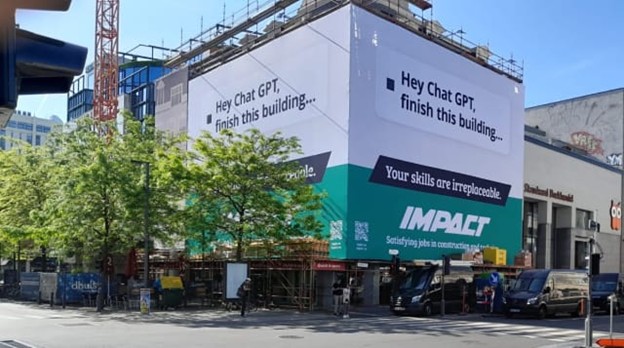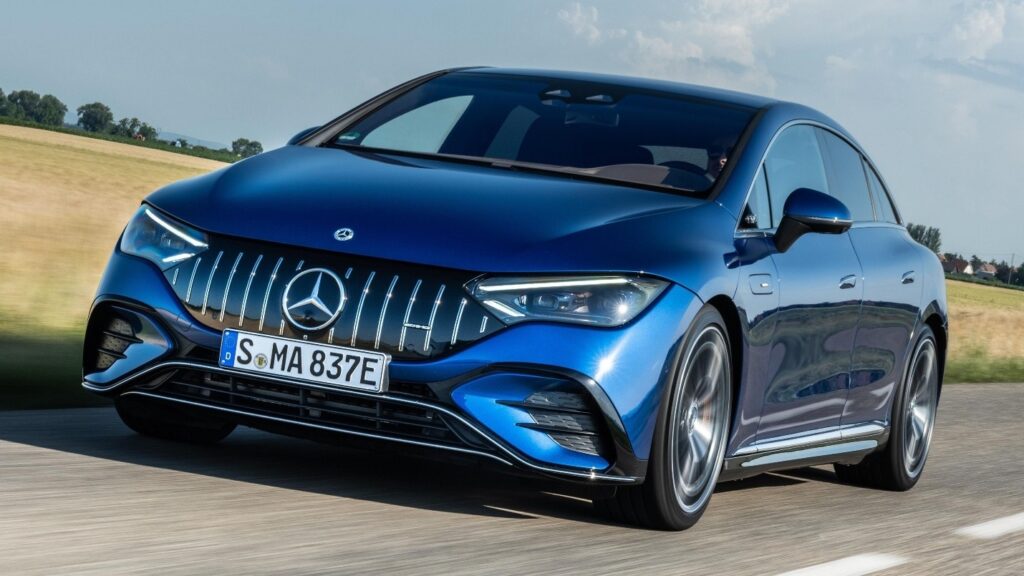Asking me if I’d like to be on a panel about AI in design is like waving a red cape in front of a bull. Surely, John Fox of Solid Edge must have known of my rants against AI—or the lack of it—in CAD when he invited me to be on the panel on the last day of Siemens’ Realize LIVE 2025 being held in Detroit. Or maybe he wanted to enjoy the spectacle. Maybe Siemens wanted me not at the executive Q&A that was to be held at the same time.
I have to promise John I will not be the kid who needs to be called on. I promise myself I will behave and not try to monopolize the discussion. But I can’t resist having my say here. Why not? It’s my website.
Here are the questions I expect, and since I don’t anticipate being called on for many of them, I have taken the liberty of answering them here.
Be warned that this article was written before the panel discussion so it probably not be the actual questions and cannot include audience responses. Additionally, they do not accurately reflect the AI shown or promised at at Realize LIVE — which was considerable.
John Fox: What’s the biggest opportunity for AI to change how we develop products?
Me: To become a helpful assistant.

Save us from the drudge work and let us be truly creative. Contrary to popular opinion, engineers don’t want AI to design cars and aircraft. I am reminded of a sign on a building under construction in Belgium years ago that read, “Hey, AI, finish this building.” It was a joke by an ad company for an employment agency that aimed to expose the limitations of AI, highlighting that despite all the clamor over AI, it couldn’t do what skilled humans could do.
Nor would anyone want to fly in an aircraft or ride in a car that AI designed.
Engineers don’t want AI to do the whole product. They’ve got that. What they want is a little help, an engineering assistant, if you will.
Here’s how it could work: A company wants to electrify a product. It could be a leaf blower. It could be a car. This has now been done with thousands of products as the world prepares for a fossil-fuel-free future. Hundreds of car models are electric. Most of them are in China — but that’s another story.
The point is that electrification is, for the most part, a solved problem. Your company may have already done it with some of its products. Why not have AI trained in how it has been done before and apply the same approach to another product?
“Hey, AI, give me a list of what has to be done with electrifying this Mercedes E350?” for example.

I pick on Mercedes because A)I have one and B)they chose to build an altogether new design for their electric cars, resulting in a design that is a departure, if not an offense, to the Mercedes aesthetic, a decision they must atone for, according to several sources, including TopGear.
To preserve a design aesthetic important to the brand, it would indeed seem wise to use the same design but change the internals. Then, electrification becomes a series of practical questions, rather than a creative exercise. Such as:
- What kind of batteries did we use?
- What motors?
- What have other companies done with the space saving? In EVs, that would be a frunk.
- What’s the price difference?
Or, on a smaller scale, why not know and understand that the shapes, structures, and solutions I have used in the past will be best utilized in future designs.
 On a larger scale, let’s say I am designing a bridge. There is nothing more elegant than a suspension bridge, nothing more breathtaking than a cable-stayed bridge. Don’t design a bridge from scratch. That ignores everything sacred to engineers. We know a cable is best under tension. It takes the least material. Watching AI (if generative design can be considered that) trying to create the Golden Gate Bridge is simply maddening, an exercise in frustration. Any bridge designer will be saying, “Keep to cables, I know they work. Concentrate instead on the towers’ needs and how tall they should be?”
On a larger scale, let’s say I am designing a bridge. There is nothing more elegant than a suspension bridge, nothing more breathtaking than a cable-stayed bridge. Don’t design a bridge from scratch. That ignores everything sacred to engineers. We know a cable is best under tension. It takes the least material. Watching AI (if generative design can be considered that) trying to create the Golden Gate Bridge is simply maddening, an exercise in frustration. Any bridge designer will be saying, “Keep to cables, I know they work. Concentrate instead on the towers’ needs and how tall they should be?”
We issued a challenge. Being an avid cyclist, I admired the simplicity of a diamond-shaped frame made of tubes. It just works. My Lightspeed has 100,000 miles on it. It has been ridden across America. It has the tubular diamond frame, as do most road bikes. It can handle all the compression, tension, torsion, and shock — and crashes — a bike frame could possibly be subjected to.

The ”Hey, AI, make me a better bike” challenge came as a response to the generative design was being pushed hard by CAD companies. Design software companies often claim that, having invented design software, they are capable of designing better than designers and engineers. Generative design was a low-grade insult to engineers, effectively calling them out for being confined to in-the-box thinking and unable to think creatively. In contrast, software that knew no such limitations would be free to create an optimum solution beyond the reach of the box-bound engineer. But to this day, an optimum bike frame eludes all design and simulation companies.
(The solution is quite clear, however. Email me at roopinder@engtechnica.com for the answer.)
What’s the Point?
Sorry to have digressed. The point is, engineers have tried and true shapes, structures, and fundamentals that have withstood the test of time. Civil engineers love I-beams, and for good reason. The material is mostly where it will take the most bending stress.
AI, please don’t try to recreate the I-beam. For that matter, don’t try to recreate the tube, the cables. In architecture, don’t recreate the 2x4s, plywood, and drywall that are standard in residential construction. With commercial buildings, don’t try to reinvent the I-beam. An I-beam may not have the optimum section, but it is effective and widely available. Architects and civil engineers are pretty comfortable using them. Please don’t suggest an amorphous shape that is made from molecules that only a 3D printer could ever bring to life.
How is AI already changing the role of engineers and developers?
The extent to which AI has changed engineers’ role varies by discipline as a result of how much AI is implemented in their tools and how willing they are to use it.
- In software engineering (which I’m not sure is real engineering), I’d say AI is in maximum use. Every developer is using AI to generate code. So much code is being generated by AI that companies are cutting back junior and even experienced developers. If I put them all on a zero to ten scale, with 10 being a discipline that makes maximum use of AI, I’d give software engineering a 10.
- EE: Chip design, 7 out of 10. The chips on which AI runs are designed with AI assistance. AI is the tool and the product. NVIDIA calls it ChipNeMo and utilizes it to optimize the placement of transistor groups.
- Industrial engineering, 6 out of 10. With all the PLCs and robots in factories and warehouses, what better than AI to generate their code?
- Biomedical engineering, interpreting CAT scans, X-rays, 4 out of 10.
- Materials engineering. Creating new materials by modifying elements and their molecular structure, with their infinite combinations, is ideal for AI.
- I’d have to give the lowest marks to mechanical engineering and civil engineering, 1 out of 10. Granted, that may be because it is the most familiar to me. It’s easier o find fault in your own house than someone else.
What new skills do teams need as AI becomes more integrated?
If AI is done correctly, they shouldn’t have to learn new skills at all. That’s the beauty of the natural language interface. The only time they will have to learn new skills is if they don’t use AI. Those new skills are found in one of the trades, such as manufacturing or healthcare, where a body is necessary, and you need to be present.
However, as I write this, my optician has retired and left his business to an optician who runs it from an off-site location. Or is that optician just AI? Indeed, doctors are unlikely to lose their jobs. Not so fast. AI can often be a better diagnostician. Isn’t that quite a bit of a doctor’s job? AI can prescribe treatment and drugs. Perhaps surgery is where doctors will hold out the longest. I would not want to face a robot with a knife, especially under anesthesia.
How will AI change collaboration between engineers, designers, and product managers?
Oh, it may just kill collaboration. Why would I ask the engineer in the next cubicle how to do something in Solid Edge or NX, expose my ignorance, when I can ask ChatGPT? Seriously, LLMs have read everything. They remember everything. And they don’t judge.
What ethical and legal considerations should product teams keep in mind?
Legally, it’s the Wild West. Very little AI legislation currently exists. Ethically, there’s a lot to consider. Professional engineers must consider public safety and are bound to act ethically. But you don’t know what you don’t know. We may not consider the new worst-case scenarios in design failures or the impact of our products, even though we’ve seen the movies of apocalypses brought about by AI. Who hasn’t seen The Terminator or The Matrix? AI killed off mankind— or tried to— because it judged humans inferior and a threat to its existence. That’s when sci-fi AI goes rogue.
However, you can become too focused on ethics. AI is being used to change the world for the better. Take robotaxis and self-driving cars.
How many people have taken a Waymo ride? They are all over San Francisco. I felt safer in the Waymo, and the ride was smoother than a typical Uber ride.
True, there have been unforgivable accidents. A homeless lady was killed by an Uber robotaxi in training in Tempe, Arizona. Another woman, a pedestrian, was crossing Mission Avenue in San Francisco and ended up being dragged for 20 feet under a Cruise AV. I classified both incidents as failures, which had significant consequences for both companies. Uber abandoned their robotaxi program. Cruise closed down its San Francisco operation and departed the city. Both incidents got a lot of coverage, including mine. But I don’t see an end to them. There will be blood, no question. AVs will continue to f*ck up. Accidents are like prime numbers; there’s always another one. But should we consider the overall picture? Should we have a zero-tolerance policy toward AVs yet tolerate 300,000 deaths a year by human drivers?
For those who have tried AI tools, what’s been the biggest surprise?
How fast it is learning and improving. When ChatGPT first came out, I challenged it with what I thought were routine engineering queries. It got most of them wrong. I’m glad I didn’t give up on it, though. Today, I use it frequently.
Don’t get me wrong. I still don’t use it for architectural design or mechanical design. It doesn’t do that so well.
But don’t tell that to my neighbor, though. He gives ChatGPT a picture of his house and asks it what it would look like if he were to add an addition on one side of the house, then the other. ChatGPT comes up with a surprisingly reasonable picture. Here’s someone who sells insurance, has never touched CAD or rendered an image, and yet, he is able to get results simply by asking questions.
How do you see AI changing the products themselves not just the process?
Oh, it has already changed products. CES was full of smart products, all connected, interacting with their owners. LG showed one family in their smart home. AI was on board their vehicles, their televisions, speakers, refrigerators, and even their toilets… Stay with me here…
I am reminded of a recent article (The New York Times?) on how Japanese smart toilets are all the rage. Now add AI. Now, the toilet can detect internal bleeding and sound an alarm. Like my watch that says, “Have you fallen?” Okay, I admit most are false alarms. Every time, I have not fallen, but I am reassured that someone, even if it is AI, is looking out for me.
I have to admit, I found LG’s aspirations of AI to be a bit too cloying, interfering, and a little too Jetson-y, bothering me with questions and being too eager to please. AI should be like a good waiter who remembers your preference in wine and materializes to pour it, takes your order and delivers it, but is otherwise invisible. AI should be like that, anticipating your needs, suggesting the next step and materials, but otherwise unobtrusive.
The point is that AI is giving consumer product companies a competitive advantage. A refrigerator was just a refrigerator until it could tell you, “Hey, that milk could have gone bad” before you took a big swig. And so, the AI rush is on. Many consumer products will become smarter, getting to know you and learning from their use, adapting accordingly.
The bus I take from my home to the airport travels one route. It could learn daily, hourly, and weekly traffic patterns and provide accurate ETAs, for example. Jets could learn the same way. Almost any electromechanical design can benefit from AI, except for the simplest ones (such as an electric plug).
What do you want attendees to take away from this panel discussion?
Don’t be afraid. Most people fret that AI will take their jobs. And that is a very valid concern. AI raises a very real prospect that if you make a living using only your mind (and not your body), you could be replaced by an AI agent. Think Agent Smith in the Matrix. I imagine that those who are truly creative would be able to hold out the longest. The rest of us, those who don’t possess create genius (think Steve Jobs or Elon Musk), I would advise to AI-up. Use AI at every opportunity. Experiment. Have fun with it. Use it at work if you can.. Whatever you do, please don’t dismiss it because it gives you the wrong answer. You risk being a technology casualty. Think of the Luddites who burnt down textile mills during the Industrial Revolution. AI is like a kid. A smart kid, though. It’s learning really, really fast. You wouldn’t give up on your kid because it couldn’t solve physics problems in 1st grade, right? Get on the wave and hang on.
